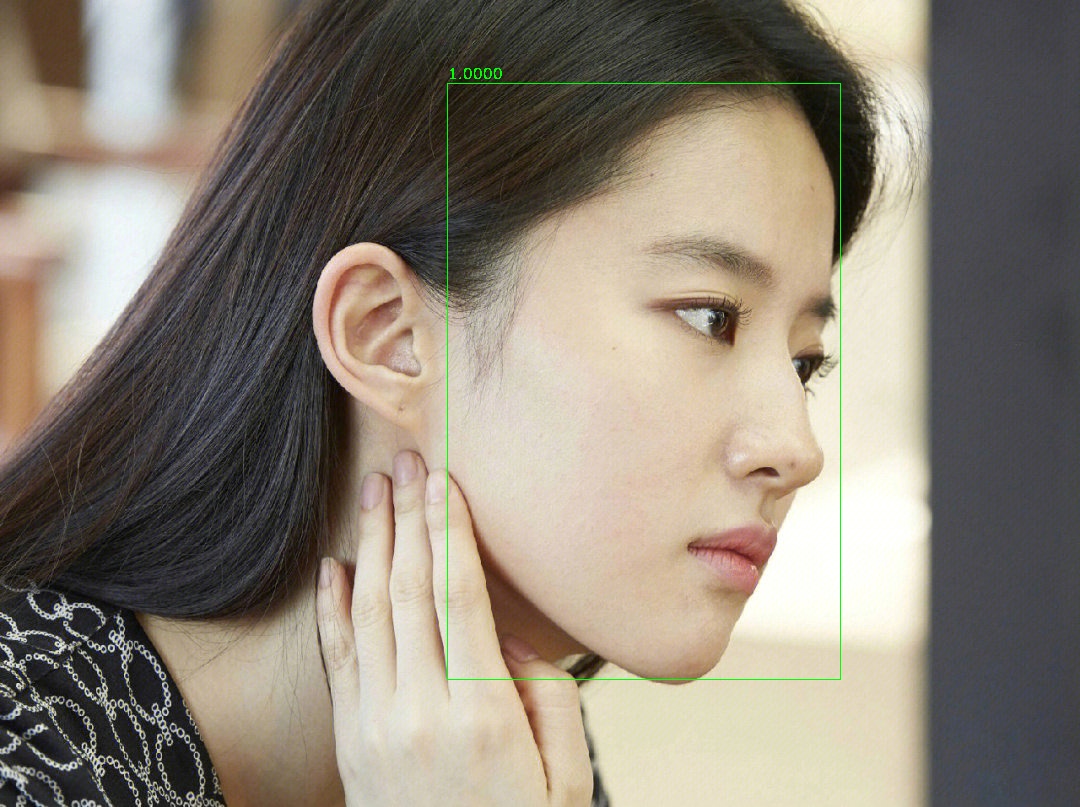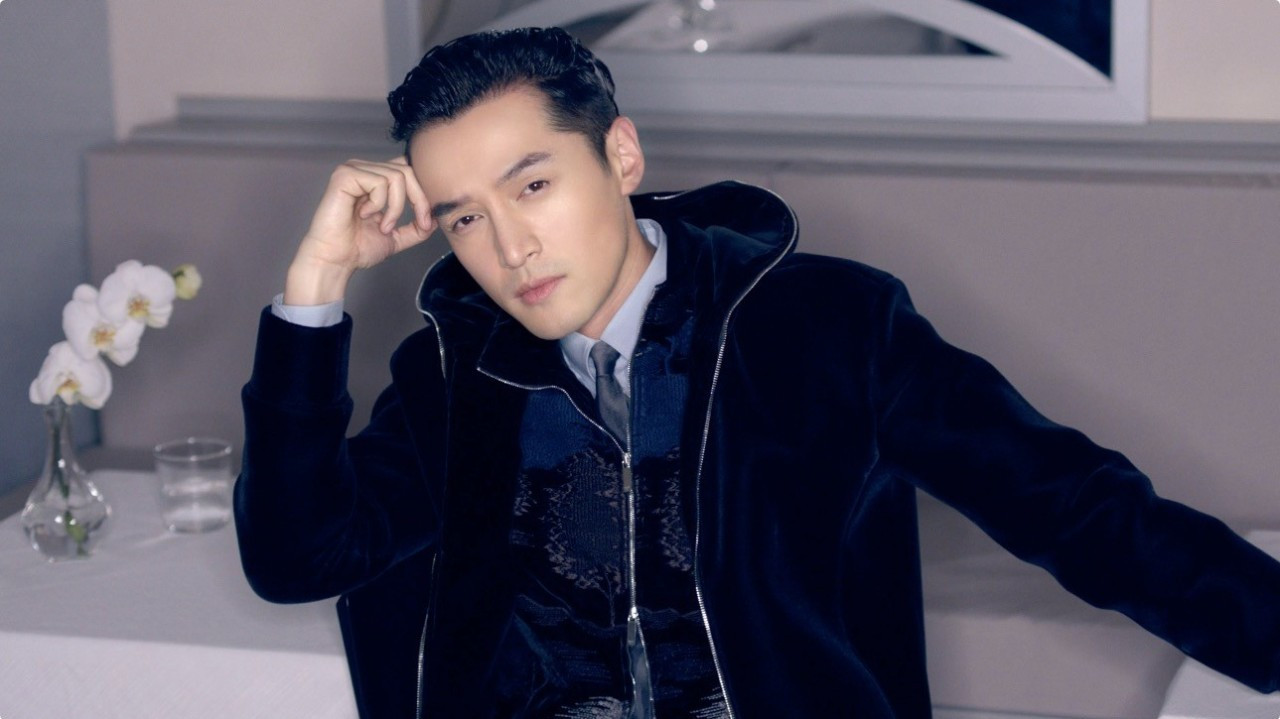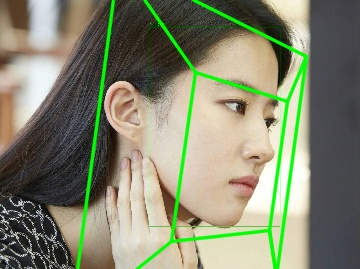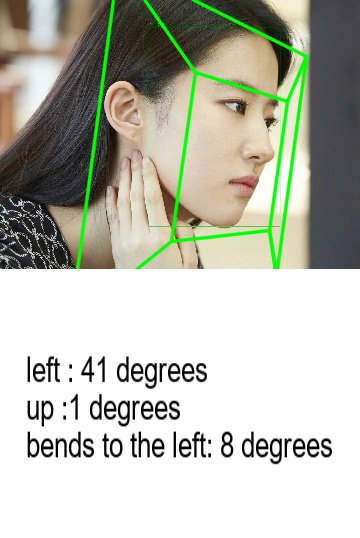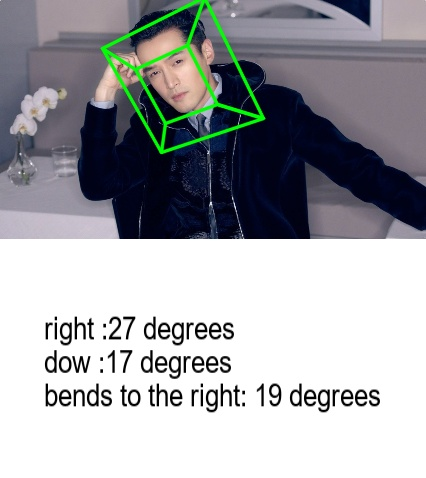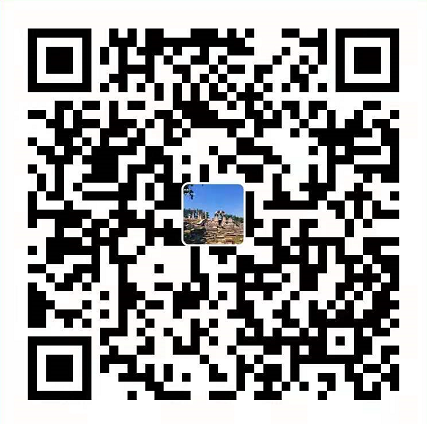1
2
3
4
5
6
7
8
9
10
11
12
13
14
15
16
17
18
19
20
21
22
23
24
25
26
27
28
29
30
31
32
33
34
35
36
37
38
39
40
41
42
43
44
45
46
47
48
49
50
51
52
53
54
55
56
57
58
59
60
61
62
63
64
65
66
67
68
69
70
71
72
73
74
75
76
77
78
79
80
81
82
83
84
85
86
87
88
89
90
91
92
93
94
95
96
97
98
99
100
101
102
103
104
105
106
107
108
109
110
111
112
113
114
115
116
117
118
119
120
121
122
123
124
125
126
127
128
129
130
131
132
133
134
135
136
137
138
139
140
141
142
143
144
145
146
147
148
149
150
151
152
153
154
155
156
157
158
159
160
161
162
163
164
165
166
167
168
169
170
171
172
173
174
175
176
177
178
179
180
181
182
183
184
185
186
187
188
189
190
191
192
193
194
195
196
197
198
199
200
201
202
203
204
205
206
207
208
209
210
211
212
213
214
215
216
217
218
219
220
221
222
223
224
225
226
227
228
229
230
231
232
233
234
235
236
237
238
239
240
241
242
243
244
245
246
247
248
249
250
251
252
253
254
255
256
257
258
259
260
261
262
263
264
265
266
267
268
269
270
271
272
273
274
275
276
277
278
279
280
281
282
283
284
285
286
287
288
289
290
291
292
293
294
295
296
297
298
299
300
301
302
303
304
305
306
307
308
309
310
311
312
313
314
315
316
317
318
319
320
321
322
323
324
325
326
327
328
329
330
331
332
333
334
335
336
337
338
339
340
341
342
343
344
345
346
347
348
349
350
351
352
353
354
355
356
357
358
359
360
361
362
363
364
365
366
367
368
369
370
371
372
373
374
375
376
377
378
379
380
381
382
383
384
385
386
387
388
389
390
391
392
393
394
395
396
397
398
399
400
401
402
403
404
405
406
407
408
409
410
411
412
413
414
415
416
417
418
419
420
421
422
423
424
425
426
427
428
429
430
431
432
433
434
435
436
437
438
439
440
441
442
443
444
445
446
447
448
449
450
451
452
453
454
455
456
457
458
459
460
461
462
463
464
465
466
467
468
469
470
471
472
473
474
475
476
477
478
479
480
481
482
483
484
485
486
487
488
489
490
491
492
493
494
495
496
497
498
499
500
501
502
503
504
505
506
507
508
509
510
511
512
513
514
515
516
517
518
519
520
521
522
523
524
525
526
|
"""
@File : face_ypr_demo.py
@Time : 2023/06/05 21:32:45
@Author : Li Ruilong
@Version : 1.0
@Contact : liruilonger@gmail.com
@Desc : 根据68个人脸关键点,获取人头部姿态评估
"""
import cv2
import numpy as np
import dlib
import math
import uuid
detector = dlib.get_frontal_face_detector()
predictor = dlib.shape_predictor(r".\shape_predictor_68_face_landmarks.dat")
POINTS_NUM_LANDMARK = 68
def _largest_face(dets):
"""
@Time : 2023/06/05 21:30:37
@Author : liruilonger@gmail.com
@Version : 1.0
@Desc : 从一个由 dlib 库检测到的人脸框列表中,找到最大的人脸框,并返回该框在列表中的索
如果只有一个人脸,直接返回
Args:
dets: 一个由 `dlib.rectangle` 类型的对象组成的列表,每个对象表示一个人脸框
Returns:
人脸索引
"""
if len(dets) == 1:
return 0
face_areas = [(det.right() - det.left()) * (det.bottom() - det.top()) for det in dets]
import heapq
largest_area = face_areas[0]
largest_index = 0
for index in range(1, len(dets)):
if face_areas[index] > largest_area:
largest_index = index
largest_area = face_areas[index]
print("largest_face index is {} in {} faces".format(largest_index, len(dets)))
return largest_index
def get_image_points_from_landmark_shape(landmark_shape):
"""
@Time : 2023/06/05 22:30:02
@Author : liruilonger@gmail.com
@Version : 1.0
@Desc : 从dlib的检测结果抽取姿态估计需要的点坐标
Args:
landmark_shape: 所有的位置点
Returns:
void
"""
if landmark_shape.num_parts != POINTS_NUM_LANDMARK:
print("ERROR:landmark_shape.num_parts-{}".format(landmark_shape.num_parts))
return -1, None
image_points = np.array([
(landmark_shape.part(17).x, landmark_shape.part(17).y),
(landmark_shape.part(21).x, landmark_shape.part(21).y),
(landmark_shape.part(22).x, landmark_shape.part(22).y),
(landmark_shape.part(26).x, landmark_shape.part(26).y),
(landmark_shape.part(36).x, landmark_shape.part(36).y),
(landmark_shape.part(39).x, landmark_shape.part(39).y),
(landmark_shape.part(42).x, landmark_shape.part(42).y),
(landmark_shape.part(45).x, landmark_shape.part(45).y),
(landmark_shape.part(31).x, landmark_shape.part(31).y),
(landmark_shape.part(35).x, landmark_shape.part(35).y),
(landmark_shape.part(48).x, landmark_shape.part(48).y),
(landmark_shape.part(54).x, landmark_shape.part(54).y),
(landmark_shape.part(57).x, landmark_shape.part(57).y),
(landmark_shape.part(8).x, landmark_shape.part(8).y),
], dtype="double")
return 0, image_points
def get_image_points(img):
"""
@Time : 2023/06/05 22:30:43
@Author : liruilonger@gmail.com
@Version : 1.0
@Desc : 用dlib检测关键点,返回姿态估计需要的几个点坐标
Args:
Returns:
void
"""
gray = cv2.cvtColor(img, cv2.COLOR_BGR2GRAY)
dets = detector(img, 0)
if 0 == len(dets):
print("ERROR: found no face")
return -1, None
largest_index = _largest_face(dets)
face_rectangle = dets[largest_index]
landmark_shape = predictor(img, face_rectangle)
draw = im.copy()
cv2.circle(draw, (landmark_shape.part(0).x, landmark_shape.part(0).y), 2, (0, 255, 0), -1)
cv2.circle(draw, (landmark_shape.part(1).x, landmark_shape.part(1).y), 2, (0, 255, 0), -1)
cv2.circle(draw, (landmark_shape.part(2).x, landmark_shape.part(2).y), 2, (0, 255, 0), -1)
cv2.circle(draw, (landmark_shape.part(3).x, landmark_shape.part(3).y), 2, (0, 255, 0), -1)
cv2.circle(draw, (landmark_shape.part(4).x, landmark_shape.part(4).y), 2, (0, 255, 0), -1)
cv2.circle(draw, (landmark_shape.part(5).x, landmark_shape.part(5).y), 2, (0, 255, 0), -1)
cv2.circle(draw, (landmark_shape.part(6).x, landmark_shape.part(6).y), 2, (0, 255, 0), -1)
cv2.circle(draw, (landmark_shape.part(7).x, landmark_shape.part(7).y), 2, (0, 255, 0), -1)
cv2.circle(draw, (landmark_shape.part(8).x, landmark_shape.part(8).y), 2, (0, 255, 0), -1)
cv2.circle(draw, (landmark_shape.part(9).x, landmark_shape.part(9).y), 2, (0, 255, 0), -1)
cv2.circle(draw, (landmark_shape.part(10).x, landmark_shape.part(10).y), 2, (0, 255, 0), -1)
cv2.circle(draw, (landmark_shape.part(11).x, landmark_shape.part(11).y), 2, (0, 255, 0), -1)
cv2.circle(draw, (landmark_shape.part(12).x, landmark_shape.part(12).y), 2, (0, 255, 0), -1)
cv2.circle(draw, (landmark_shape.part(13).x, landmark_shape.part(13).y), 2, (0, 255, 0), -1)
cv2.circle(draw, (landmark_shape.part(14).x, landmark_shape.part(14).y), 2, (0, 255, 0), -1)
cv2.circle(draw, (landmark_shape.part(15).x, landmark_shape.part(15).y), 2, (0, 255, 0), -1)
cv2.circle(draw, (landmark_shape.part(16).x, landmark_shape.part(16).y), 2, (0, 255, 0), -1)
cv2.circle(draw, (landmark_shape.part(17).x, landmark_shape.part(17).y), 2, (0, 255, 0), -1)
cv2.circle(draw, (landmark_shape.part(18).x, landmark_shape.part(18).y), 2, (0, 255, 0), -1)
cv2.circle(draw, (landmark_shape.part(19).x, landmark_shape.part(19).y), 2, (0, 255, 0), -1)
cv2.circle(draw, (landmark_shape.part(20).x, landmark_shape.part(20).y), 2, (0, 255, 0), -1)
cv2.circle(draw, (landmark_shape.part(21).x, landmark_shape.part(21).y), 2, (0, 255, 0), -1)
cv2.circle(draw, (landmark_shape.part(22).x, landmark_shape.part(22).y), 2, (0, 255, 0), -1)
cv2.circle(draw, (landmark_shape.part(23).x, landmark_shape.part(23).y), 2, (0, 255, 0), -1)
cv2.circle(draw, (landmark_shape.part(24).x, landmark_shape.part(24).y), 2, (0, 255, 0), -1)
cv2.circle(draw, (landmark_shape.part(25).x, landmark_shape.part(25).y), 2, (0, 255, 0), -1)
cv2.circle(draw, (landmark_shape.part(26).x, landmark_shape.part(26).y), 2, (0, 255, 0), -1)
cv2.circle(draw, (landmark_shape.part(27).x, landmark_shape.part(27).y), 2, (0, 255, 0), -1)
cv2.circle(draw, (landmark_shape.part(28).x, landmark_shape.part(28).y), 2, (0, 255, 0), -1)
cv2.circle(draw, (landmark_shape.part(29).x, landmark_shape.part(29).y), 2, (0, 255, 0), -1)
cv2.circle(draw, (landmark_shape.part(30).x, landmark_shape.part(30).y), 2, (0, 255, 0), -1)
cv2.circle(draw, (landmark_shape.part(31).x, landmark_shape.part(31).y), 2, (0, 255, 0), -1)
cv2.circle(draw, (landmark_shape.part(32).x, landmark_shape.part(32).y), 2, (0, 255, 0), -1)
cv2.circle(draw, (landmark_shape.part(33).x, landmark_shape.part(33).y), 2, (0, 255, 0), -1)
cv2.circle(draw, (landmark_shape.part(34).x, landmark_shape.part(34).y), 2, (0, 255, 0), -1)
cv2.circle(draw, (landmark_shape.part(35).x, landmark_shape.part(35).y), 2, (0, 255, 0), -1)
cv2.circle(draw, (landmark_shape.part(36).x, landmark_shape.part(36).y), 2, (0, 255, 0), -1)
cv2.circle(draw, (landmark_shape.part(37).x, landmark_shape.part(37).y), 2, (0, 255, 0), -1)
cv2.circle(draw, (landmark_shape.part(38).x, landmark_shape.part(38).y), 2, (0, 255, 0), -1)
cv2.circle(draw, (landmark_shape.part(39).x, landmark_shape.part(39).y), 2, (0, 255, 0), -1)
cv2.circle(draw, (landmark_shape.part(40).x, landmark_shape.part(40).y), 2, (0, 255, 0), -1)
cv2.circle(draw, (landmark_shape.part(41).x, landmark_shape.part(41).y), 2, (0, 255, 0), -1)
cv2.circle(draw, (landmark_shape.part(42).x, landmark_shape.part(42).y), 2, (0, 255, 0), -1)
cv2.circle(draw, (landmark_shape.part(43).x, landmark_shape.part(43).y), 2, (0, 255, 0), -1)
cv2.circle(draw, (landmark_shape.part(44).x, landmark_shape.part(44).y), 2, (0, 255, 0), -1)
cv2.circle(draw, (landmark_shape.part(45).x, landmark_shape.part(45).y), 2, (0, 255, 0), -1)
cv2.circle(draw, (landmark_shape.part(46).x, landmark_shape.part(46).y), 2, (0, 255, 0), -1)
cv2.circle(draw, (landmark_shape.part(47).x, landmark_shape.part(47).y), 2, (0, 255, 0), -1)
cv2.circle(draw, (landmark_shape.part(48).x, landmark_shape.part(48).y), 2, (0, 255, 0), -1)
cv2.circle(draw, (landmark_shape.part(49).x, landmark_shape.part(49).y), 2, (0, 255, 0), -1)
cv2.circle(draw, (landmark_shape.part(50).x, landmark_shape.part(50).y), 2, (0, 255, 0), -1)
cv2.circle(draw, (landmark_shape.part(51).x, landmark_shape.part(51).y), 2, (0, 255, 0), -1)
cv2.circle(draw, (landmark_shape.part(52).x, landmark_shape.part(52).y), 2, (0, 255, 0), -1)
cv2.circle(draw, (landmark_shape.part(53).x, landmark_shape.part(53).y), 2, (0, 255, 0), -1)
cv2.circle(draw, (landmark_shape.part(54).x, landmark_shape.part(54).y), 2, (0, 255, 0), -1)
cv2.circle(draw, (landmark_shape.part(55).x, landmark_shape.part(55).y), 2, (0, 255, 0), -1)
cv2.circle(draw, (landmark_shape.part(56).x, landmark_shape.part(56).y), 2, (0, 255, 0), -1)
cv2.circle(draw, (landmark_shape.part(57).x, landmark_shape.part(57).y), 2, (0, 255, 0), -1)
cv2.circle(draw, (landmark_shape.part(58).x, landmark_shape.part(58).y), 2, (0, 255, 0), -1)
cv2.circle(draw, (landmark_shape.part(59).x, landmark_shape.part(59).y), 2, (0, 255, 0), -1)
cv2.circle(draw, (landmark_shape.part(60).x, landmark_shape.part(60).y), 2, (0, 255, 0), -1)
cv2.circle(draw, (landmark_shape.part(61).x, landmark_shape.part(61).y), 2, (0, 255, 0), -1)
cv2.circle(draw, (landmark_shape.part(62).x, landmark_shape.part(62).y), 2, (0, 255, 0), -1)
cv2.circle(draw, (landmark_shape.part(63).x, landmark_shape.part(63).y), 2, (0, 255, 0), -1)
cv2.circle(draw, (landmark_shape.part(64).x, landmark_shape.part(64).y), 2, (0, 255, 0), -1)
cv2.circle(draw, (landmark_shape.part(65).x, landmark_shape.part(65).y), 2, (0, 255, 0), -1)
cv2.circle(draw, (landmark_shape.part(66).x, landmark_shape.part(66).y), 2, (0, 255, 0), -1)
cv2.circle(draw, (landmark_shape.part(67).x, landmark_shape.part(67).y), 2, (0, 255, 0), -1)
cv2.circle(draw, (landmark_shape.part(17).x, landmark_shape.part(17).y), 2, (0, 165, 255),
-1)
cv2.circle(draw, (landmark_shape.part(21).x, landmark_shape.part(21).y), 2, (0, 165, 255),
-1)
cv2.circle(draw, (landmark_shape.part(22).x, landmark_shape.part(22).y), 2, (0, 165, 255),
-1)
cv2.circle(draw, (landmark_shape.part(26).x, landmark_shape.part(26).y), 2, (0, 165, 255),
-1)
cv2.circle(draw, (landmark_shape.part(36).x, landmark_shape.part(36).y), 2, (0, 165, 255),
-1)
cv2.circle(draw, (landmark_shape.part(39).x, landmark_shape.part(39).y), 2, (0, 165, 255),
-1)
cv2.circle(draw, (landmark_shape.part(42).x, landmark_shape.part(42).y), 2, (0, 165, 255),
-1)
cv2.circle(draw, (landmark_shape.part(45).x, landmark_shape.part(45).y), 2, (0, 165, 255),
-1)
cv2.circle(draw, (landmark_shape.part(31).x, landmark_shape.part(31).y), 2, (0, 165, 255),
-1)
cv2.circle(draw, (landmark_shape.part(35).x, landmark_shape.part(35).y), 2, (0, 165, 255),
-1)
cv2.circle(draw, (landmark_shape.part(48).x, landmark_shape.part(48).y), 2, (0, 165, 255),
-1)
cv2.circle(draw, (landmark_shape.part(54).x, landmark_shape.part(54).y), 2, (0, 165, 255),
-1)
cv2.circle(draw, (landmark_shape.part(57).x, landmark_shape.part(57).y), 2, (0, 165, 255),
-1)
cv2.circle(draw, (landmark_shape.part(8).x, landmark_shape.part(8).y), 2, (0, 165, 255), -1)
cv2.imwrite('new_' + "KeyPointDetection.jpg", draw)
return get_image_points_from_landmark_shape(landmark_shape)
def get_pose_estimation(img_size, image_points):
"""
@Time : 2023/06/05 22:31:31
@Author : liruilonger@gmail.com
@Version : 1.0
@Desc : 获取旋转向量和平移向量
Args:
Returns:
void
"""
model_points = np.array([
(6.825897, 6.760612, 4.402142),
(1.330353, 7.122144, 6.903745),
(-1.330353, 7.122144, 6.903745),
(-6.825897, 6.760612, 4.402142),
(5.311432, 5.485328, 3.987654),
(1.789930, 5.393625, 4.413414),
(-1.789930, 5.393625, 4.413414),
(-5.311432, 5.485328, 3.987654),
(2.005628, 1.409845, 6.165652),
(-2.005628, 1.409845, 6.165652),
(2.774015, -2.080775, 5.048531),
(-2.774015, -2.080775, 5.048531),
(0.000000, -3.116408, 6.097667),
(0.000000, -7.415691, 4.070434)
])
focal_length = img_size[1]
center = (img_size[1] / 2, img_size[0] / 2)
camera_matrix = np.array(
[[focal_length, 0, center[0]],
[0, focal_length, center[1]],
[0, 0, 1]], dtype="double"
)
dist_coeffs = np.array([7.0834633684407095e-002, 6.9140193737175351e-002, 0.0, 0.0, -1.3073460323689292e+000],
dtype="double")
(success, rotation_vector, translation_vector) = cv2.solvePnP(model_points, image_points, camera_matrix,
dist_coeffs, flags=cv2.SOLVEPNP_ITERATIVE)
return success, rotation_vector, translation_vector, camera_matrix, dist_coeffs
def draw_annotation_box(image, rotation_vector, translation_vector, camera_matrix, dist_coeefs, color=(0, 255, 0),
line_width=2):
"""
@Time : 2023/06/05 22:09:14
@Author : liruilonger@gmail.com
@Version : 1.0
@Desc : 标记一个人脸朝向的3D框
Args:
Returns:
void
"""
"""Draw a 3D box as annotation of pose"""
point_3d = []
rear_size = 10
rear_depth = 0
point_3d.append((-rear_size, -rear_size, rear_depth))
point_3d.append((-rear_size, rear_size, rear_depth))
point_3d.append((rear_size, rear_size, rear_depth))
point_3d.append((rear_size, -rear_size, rear_depth))
point_3d.append((-rear_size, -rear_size, rear_depth))
front_size = 10
front_depth = 10
point_3d.append((-front_size, -front_size, front_depth))
point_3d.append((-front_size, front_size, front_depth))
point_3d.append((front_size, front_size, front_depth))
point_3d.append((front_size, -front_size, front_depth))
point_3d.append((-front_size, -front_size, front_depth))
point_3d = np.array(point_3d, dtype=np.float32).reshape(-1, 3)
(point_2d, _) = cv2.projectPoints(point_3d,
rotation_vector,
translation_vector,
camera_matrix,
dist_coeefs)
point_2d = np.int32(point_2d.reshape(-1, 2))
cv2.polylines(image, [point_2d], True, color, line_width, cv2.LINE_AA)
cv2.line(image, tuple(point_2d[1]), tuple(
point_2d[6]), color, line_width, cv2.LINE_AA)
cv2.line(image, tuple(point_2d[2]), tuple(
point_2d[7]), color, line_width, cv2.LINE_AA)
cv2.line(image, tuple(point_2d[3]), tuple(
point_2d[8]), color, line_width, cv2.LINE_AA)
def get_euler_angle(rotation_vector):
"""
@Time : 2023/06/05 22:31:52
@Author : liruilonger@gmail.com
@Version : 1.0
@Desc : 从旋转向量转换为欧拉角
Args:
Returns:
void
"""
theta = cv2.norm(rotation_vector, cv2.NORM_L2)
w = math.cos(theta / 2)
x = math.sin(theta / 2) * rotation_vector[0][0] / theta
y = math.sin(theta / 2) * rotation_vector[1][0] / theta
z = math.sin(theta / 2) * rotation_vector[2][0] / theta
ysqr = y * y
t0 = 2.0 * (w * x + y * z)
t1 = 1.0 - 2.0 * (x * x + ysqr)
pitch = math.atan2(t0, t1)
t2 = 2.0 * (w * y - z * x)
if t2 > 1.0:
t2 = 1.0
if t2 < -1.0:
t2 = -1.0
yaw = math.asin(t2)
t3 = 2.0 * (w * z + x * y)
t4 = 1.0 - 2.0 * (ysqr + z * z)
roll = math.atan2(t3, t4)
print('pitch:{}, yaw:{}, roll:{}'.format(pitch, yaw, roll))
pitch_degree = int((pitch / math.pi) * 180)
yaw_degree = int((yaw / math.pi) * 180)
roll_degree = int((roll / math.pi) * 180)
return 0, pitch, yaw, roll, pitch_degree, yaw_degree, roll_degree
def get_pose_estimation_in_euler_angle(landmark_shape, im_szie):
try:
ret, image_points = get_image_points_from_landmark_shape(landmark_shape)
if ret != 0:
print('get_image_points failed')
return -1, None, None, None
ret, rotation_vector, translation_vector, camera_matrix, dist_coeffs = get_pose_estimation(im_szie,
image_points)
if ret != True:
print('get_pose_estimation failed')
return -1, None, None, None
ret, pitch, yaw, roll = get_euler_angle(rotation_vector)
if ret != 0:
print('get_euler_angle failed')
return -1, None, None, None
euler_angle_str = 'Pitch:{}, Yaw:{}, Roll:{}'.format(pitch, yaw, roll)
print(euler_angle_str)
return 0, pitch, yaw, roll
except Exception as e:
print('get_pose_estimation_in_euler_angle exception:{}'.format(e))
return -1, None, None, None
def build_img_text_marge(img_, text, height):
"""
@Time : 2023/06/01 05:29:09
@Author : liruilonger@gmail.com
@Version : 1.0
@Desc : 生成文字图片拼接到 img 对象
Args:
Returns:
void
"""
import cv2
from PIL import Image, ImageDraw, ImageFont
width = img_.shape[1]
background_color = (255, 255, 255)
font_path = 'arial.ttf'
font_size = 26
font_color = (0, 0, 0)
image = Image.new('RGB', (width, height), background_color)
draw = ImageDraw.Draw(image)
font = ImageFont.truetype(font_path, font_size)
text_width, text_height = draw.textsize(text, font)
text_x = (width - text_width) // 2
text_y = (height - text_height) // 2
draw.text((text_x, text_y), text, font=font, fill=font_color)
image_cv = cv2.cvtColor(np.array(image), cv2.COLOR_RGB2BGR)
montage_size = (width, img_.shape[0])
import imutils
montages = imutils.build_montages([img_, image_cv], montage_size, (1, 2))
return montages[0]
if __name__ == '__main__':
from imutils import paths
for imagePath in range(1):
print(f"处理的图片路径为: {imagePath}")
im = cv2.imread("image.jpg")
size = im.shape
if size[0] > 700:
h = size[0] / 3
w = size[1] / 3
im = cv2.resize(im, (int(w), int(h)), interpolation=cv2.INTER_CUBIC)
size = im.shape
ret, image_points = get_image_points(im)
if ret != 0:
print('get_image_points failed')
continue
ret, rotation_vector, translation_vector, camera_matrix, dist_coeffs = get_pose_estimation(size, image_points)
if ret != True:
print('get_pose_estimation failed')
continue
draw_annotation_box(im, rotation_vector, translation_vector, camera_matrix, dist_coeffs)
cv2.imwrite('new_' + "draw_annotation_box.jpg", im)
ret, pitch, yaw, roll, pitch_degree, yaw_degree, roll_degree = get_euler_angle(rotation_vector)
draw = im.copy()
if yaw_degree < 0:
output_yaw = "left : " + str(abs(yaw_degree)) + " degrees"
elif yaw_degree > 0:
output_yaw = "right :" + str(abs(yaw_degree)) + " degrees"
else:
output_yaw = "No left or right"
print(output_yaw)
if pitch_degree > 0:
output_pitch = "dow :" + str(abs(pitch_degree)) + " degrees"
elif pitch_degree < 0:
output_pitch = "up :" + str(abs(pitch_degree)) + " degrees"
else:
output_pitch = "No downwards or upwards"
print(output_pitch)
if roll_degree < 0:
output_roll = "bends to the right: " + str(abs(roll_degree)) + " degrees"
elif roll_degree > 0:
output_roll = "bends to the left: " + str(abs(roll_degree)) + " degrees"
else:
output_roll = "No bend right or left."
print(output_roll)
if abs(yaw) < 0.00001 and abs(pitch) < 0.00001 and abs(roll) < 0.00001:
cv2.putText(draw, "Initial ststus", (20, 40), cv2.FONT_HERSHEY_SIMPLEX, .5, (0, 255, 0))
print("Initial ststus")
imgss = build_img_text_marge(im, output_yaw + "\n" + output_pitch + "\n" + output_roll, 200)
cv2.imwrite('new_' + str(uuid.uuid4()).replace('-', '') + ".jpg", imgss)
|
